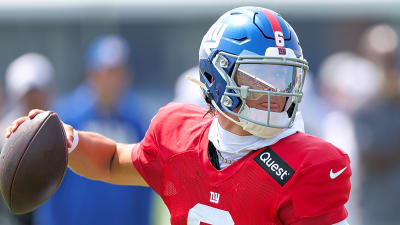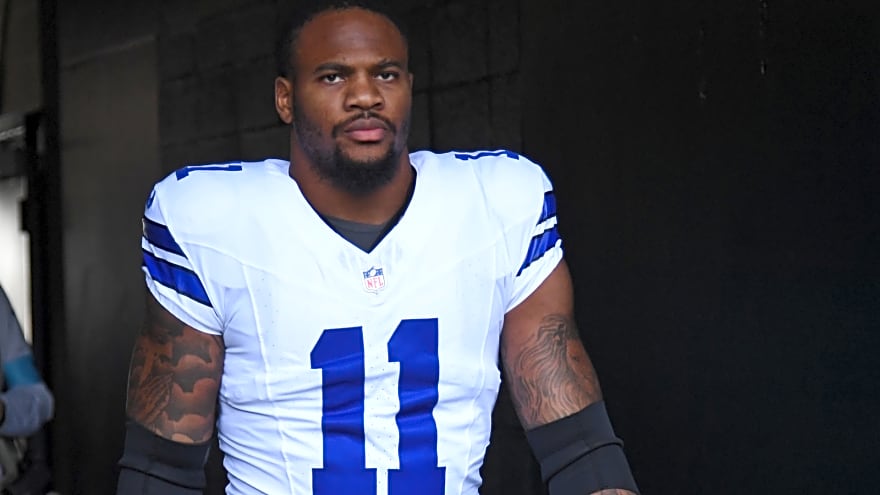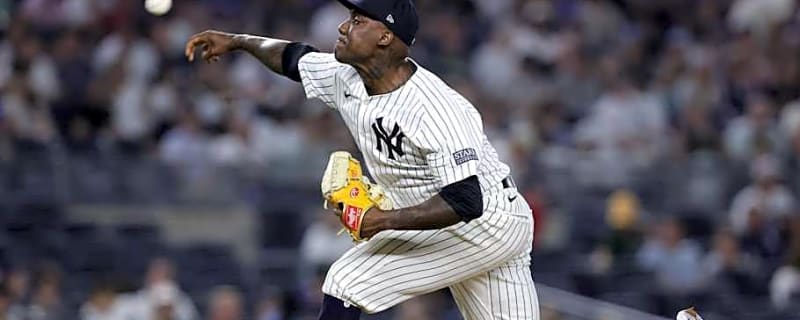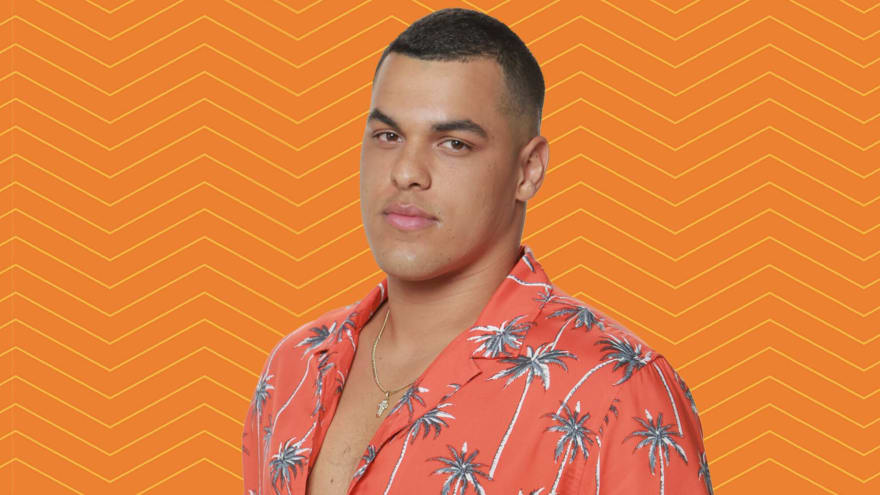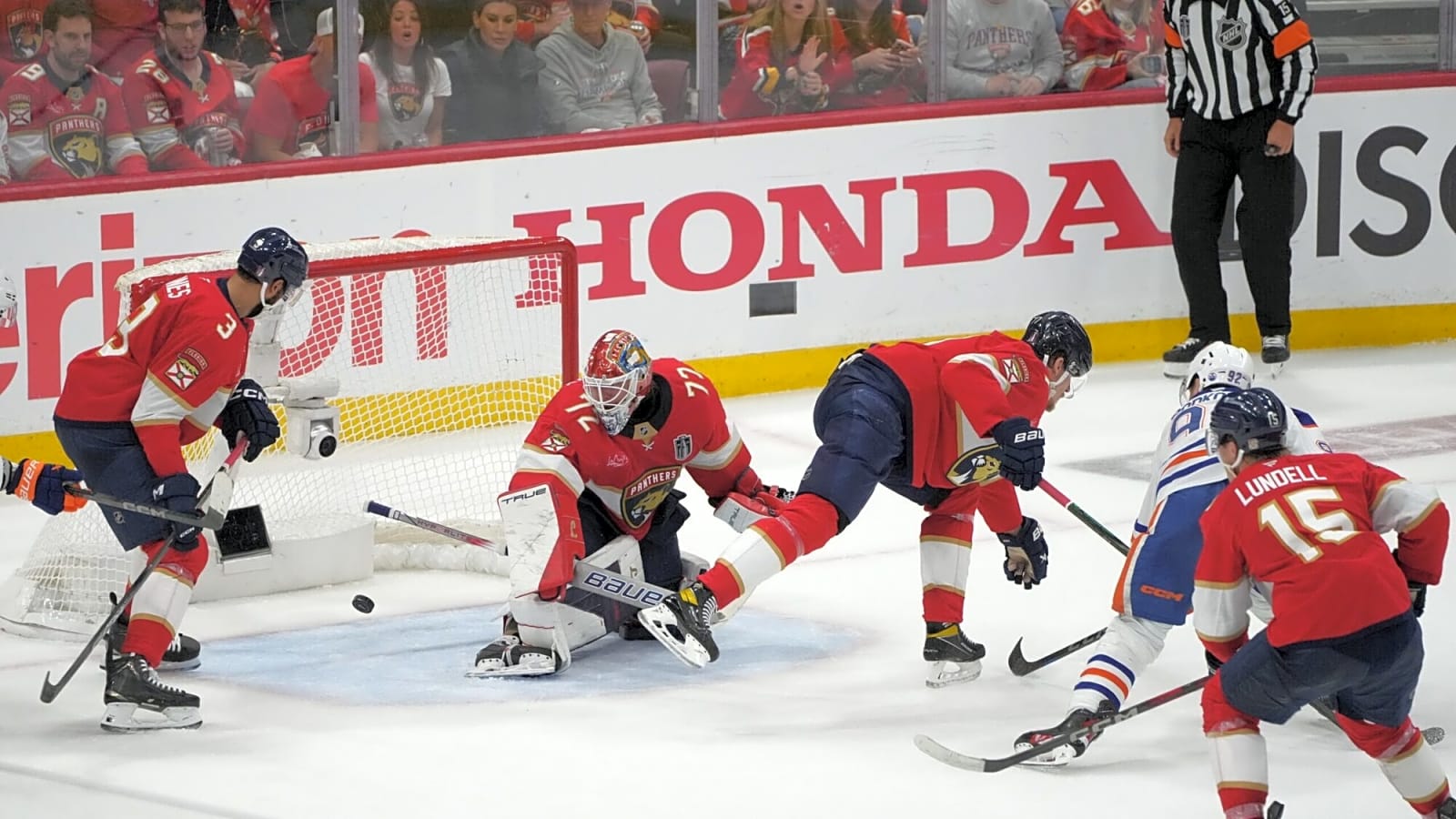
The officiating. The ice. The Oilers fans were in full-throated protest last night, watching their team down 3-0 after the first period. What I didn’t hear from many fans, but what was uniformly expressed by the players, was that the Edmonton team was simply not good enough.
Whatever the reason, the Oilers continued to play a very emotional style of hockey. Whether it was taking penalties, getting out of position by going for the big hit or looking confused on assignments, the Oilers had it all in the first period.
Then came the second period, and a completely different team emerged from the dressing room. The Oilers looked disciplined and structured. They played patiently, waiting for opportunities. Instead of the Panthers’ forecheck having its way, the Oilers’ forecheck became the potent force. Instead of the Oilers getting caught chasing, it was the Panthers. It all led to the teams playing their third overtime game of the series, with the Oilers coming out on top.
How did the Oilers even up the series at two? Let’s watch the tape.
What Caught My Eye?
The Unforced Error
The Panthers have rightly been praised for their structured system. However, in this series, the Oilers have done a lot to help the Panthers. Last night’s first period was another example.
Take a look at some of these plays by the Oilers. In the first one, it’s Leon Draisaitl who is really just roaming the defensive zone. He ends up on Kapanen’s wing, which really means Kapanen should fill the slot. He doesn’t do that, and the Panthers get off a clean look from a very good spot.
Here’s another one involving Stuart Skinner and Connor McDavid. This puck comes to Skinner, and he can either freeze it or play it to one of his players. McDavid is gliding here instead of gathering the puck or getting ready for a quick pass. Skinner plays it off to the corner right where Barkov is waiting to gather it up.
Here’s another one that can be scored as a win for the Panthers’ forecheck, but it was also as much about the Oilers helping Florida.
In this one, the Oilers are in great shape in the neutral zone. All the players are marked. As the puck carrier slides outside, Kapanen gets drawn to him and leaves his man in the middle of the ice. This is an absolute no-no.
You backtrack through the middle of the ice, marking a player. Only if there is no one should you go to the puck. Kapanen misses the assignment. Guess who comes up with the puck down in the corner? Kapanen’s check.
Then there’s this play with Brett Kulak. In this instance, he scans the ice as he goes back to retrieve the puck. He knows he has a player behind him, and he sees the Florida check coming to cut him off in the corner.
Instead of stopping on the puck and making sure he can make a play with it, he tries to skate through and bat the puck to the weak side. The puck jumps, and because he keeps skating, Florida retrieves the puck.
Finally, the Panthers’ third goal was the icing on a really gross cake.
In this one, Troy Stecher retrieves the puck and fails the reverse. I don’t love Nurse’s positioning here. He isn’t wrong to be off the flank, but ideally, he’s in at the dot so that he can cover the net front on an emergency. In addition, if he is off the wall, he can round into the puck with some momentum.
This is all magnified because every Edmonton forward got beaten back to the slot by one lonely Panther. 3-0.
This was the first period. I have five more clips I could show. I’ll spare you the pain. The Oilers deserved to be down 3-0 at the end of one, and they were.
The Long Change And The Patient Game
As we’ve highlighted before, the Oilers have struggled consistently with the long change, not necessarily in overtime, but definitely during regulation, where the Panthers have dominated.
Coming into the second period down three goals and facing another long change seemed like a tough challenge for Edmonton. Yet, the Oilers flipped the script completely. They simplified their game, remained patient, and seized control.
Take a look at this pivotal play that turned the momentum decisively. The Oilers regain control and quickly move the puck up the boards. Podkolzin and Draisaitl battle hard, successfully retrieving possession and feeding it back to Walman. Walman swiftly moves the puck cross-ice, opening up crucial space for a breakout.
One clear vulnerability for the Panthers is how quickly they can lose defensive positioning.
Here, their defender aggressively jumps towards Perry. It’s too late, as Perry has already moved the puck to Podkolzin. This leaves Bouchard with open ice and space to attack, directly resulting in the penalty that sparked the Oilers’ first goal and ignited their comeback.
Here’s another simple play that led to a goal. This play was just a series of wall wins for the puck by the Oilers. Watch them all.
Here was another really simple play that created a goal. The Oilers have been quite good at causing chaos at the Florida net when they are in the zone. This play is another example. In this case, Podkolzin and Perry both go to the net hard. Nurse gets the puck to the net, and Podkolzin is just stronger than his check on this play. 3-3.
When the third period came, the Oilers did not change their game. The Oilers’ fourth goal was just another example of hard-on-the-puck perseverance. Watch this play by Ryan Nugent-Hopkins. Single-handedly beats two Panthers on the puck. Kapanen and Janmark come in a seal the play with a nice forecheck. Walman gets the goodies.
Again and again, the Oilers were better when they put the puck into the zone and won their battles. It was refreshing to see them challenge a Florida defence group that can be exposed in-zone.
Notes heading into Game 5…
The Troy Stecher experiment didn’t last very long. A total of 4:18 seconds of ice-time. The goal against was tough, but there were a few mistakes on the shift. I’ll be curious what happens to the pairings on Saturday. My bet is that John Klingberg is back in after having a watch of the game from up above.
The Oilers might have a third line with Adam Henrique, Trent Frederic and Jeff Skinner. Skinner was really good in his first Stanley Cup Finals game. Very responsible defensively and won his share of battles on the wall. An interesting quirk is that this line dominated the Barkov line over three shifts. I cannot explain it, but they did. Time will tell if this is a trend.
The goaltending decision will be interesting for Game 5 . I probably go with Calvin Pickard, but it’s close.
That’s it for the breakdown of Game 4. See you all here next Sunday morning. Have a great Friday.
More must-reads:
- Veteran center attempting NHL comeback
- Lions CB undergoes shoulder surgery, will miss 2025 season
- The '2024-25 NFL passing-yard leaders' quiz
Breaking News
Trending News
Customize Your Newsletter
 +
+
Get the latest news and rumors, customized to your favorite sports and teams. Emailed daily. Always free!
TODAY'S BEST

Do Hurricanes Have What Oilers Need in Suggested Bouchard Trade?
Former NHL defenceman James Wisniewski stirred debate this week by blasting the Edmonton Oilers’ decision to sign Evan Bouchard to a four-year, $10.5 million AAV contract. On the Empty Netters podcast, Wisniewski didn’t hold back, saying bluntly: “If you want to fu—- win, that is not the guy that you’re going to sign to go to the next level.” Instead, he suggested the Oilers would have been smarter to trade Bouchard and use the money to acquire two $5-million defensemen—one for the power play and one for shutdown duties. But would that actually make Edmonton better? What Would That Bouchard Swap Look Like Today? On the surface, there’s logic in diversifying cap spending. A $10.5M cap hit is steep, especially when Connor McDavid and Leon Draisaitl already command massive salaries. Spreading the money across the lineup does have its merits, assuming that opportunity even exists. Wisniewski mentioned that almost anyone could get power-play points with the two best offensive stars in the game. We know that’s not true, but could another offensively talented defenseman do it? Someone like Shayne Gostisbehere at $3.2 million is the type of player Wisniewski is hinting he’d rather have. We know Carolina is in the market for a big swing and has been linked to Erik Karlsson. Bouchard would be a nice get, if that’s the kind of deal they’re trying to make. Hypothetically, the Hurricanes could move Gostisbehere and Jaccob Slavin and take on just over a million in extra salary. The Oilers would take back $9.6 million, saving $900K on their books, but getting two defensemen for the price of one. One could argue the Hurricanes are getting the best player in the trade. One could also argue the Oilers are better off with these two blueliners versus just Evan Bouchard. Gostisbehere posted 45 points last season in 70 games played. It would be interesting to see what he could post in Edmonton. However, Bouchard is elite by several metrics. He’s not just a power-play specialist. He drives offense, suppresses chances, and excels in the postseason. With the cap projected to rise above $110M soon, Bouchard’s deal could age well. Trading him for quantity over quality would weaken the blue line’s top end. There’s also the matter of no-move clauses that have to be considered in most trade hypotheticals. Wisniewski’s idea may make for lively debate, and there are likely other teams beyond Carolina that have what he might consider a better way to build the Oilers’ roster. But in reality, are the Oilers better off keeping a 25-year-old elite defenceman entering his prime?
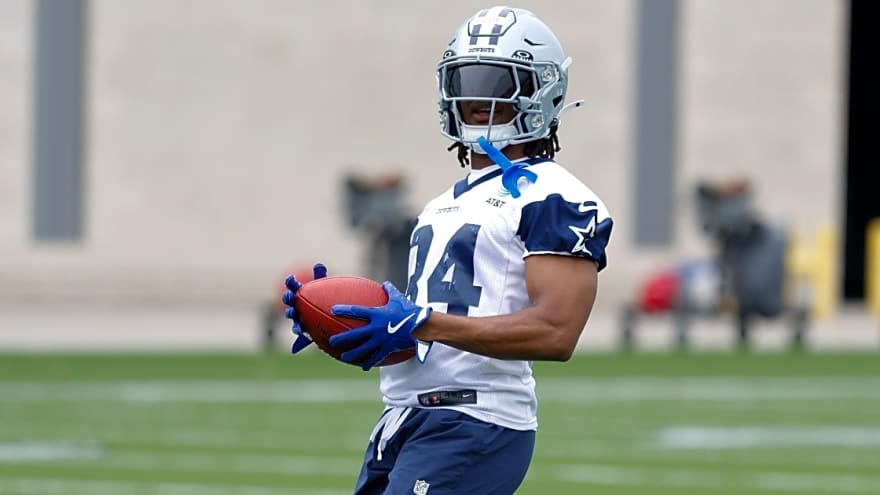
Jaydon Blue injury update: Major news emerges on Cowboys RB after Thursday practice exit
According to Nick Harris of The Fort Worth Star-Telegram, Dallas Cowboys running back Jaydon Blue suffered a bone bruise in his heel on Thursday. Blue was stepped on during practice, initially looking at an ankle sprain. Thankfully, the MRI came back with some positive news. “Cowboys RB Jaydon Blue’s MRI revealed a bone bruise in his heel after it was stepped on in today’s practice, according to a @startelegram source,” Harris said via X. “No ankle sprain. Good news for the young back who has emerged as an offensive playmaker in camp.” Blue previously told Harris that an ankle injury was what he suffered. Questions about the running back’s availability for Saturday’s preseason game against the Los Angeles Rams are now present. Something to watch as kickoff is scheduled for 6 p.m. CT from SoFi Stadium. Dallas took Blue in the fifth round of the 2025 NFL Draft, hoping to address its running back situation. Blue played his college ball inside the Lone Star State, suiting up for the Texas Longhorns. Plenty of guys at the position have come out of Austin and found quick success. Blue is hoping to be the next one. For now, there is an injury for him to deal with. No exact timeline has been provided per a report or by a team official. Hopefully, Blue is able to get things cleared up quickly and get his first taste of the NFL before Sept. 4’s season opener against the Philadelphia Eagles. More on Jaydon Blue, Cowboys running back situation Running back was a position the Cowboys needed to desperately figure out this offseason. Rico Dowdle, the team’s leading rusher, was no longer on the roster. Behind Dowdle, Dallas did not have much else. A nice mix of veteran presence and youngsters was needed. Javonte Williams and Miles Sanders provide the former, while Blue was a part of the draft class alongside Phil Mafah. A combination of those four figures to be on the opening night roster. Exactly how head coach Brian Schottenheimer splits up the carries is not yet known. Blue’s injury certainly does not help the situation. Cowboys players, in general, have been going down throughout training camp thus far. Making sure everyone is healthy will be critical heading into the season. Especially an explosive back like Blue, someone who can change the outcome of any game in just the snap of your fingers.

Padres already demoting one of their trade-deadline acquisitions
The Padres announced they’ve optioned JP Sears to Triple-A El Paso. They recalled reliever Sean Reynolds and will go with a nine-man bullpen in the short term. Sears will spend at least 15 days in the minors unless he’s brought up to replace a player going on the injured list. San Diego acquired Sears alongside Mason Miller in last week’s massive deadline deal. The 29-year-old southpaw made his team debut Monday night. He allowed five runs in as many innings on 10 hits and a walk against the Diamondbacks. Sears took the loss in a 6-2 defeat. He’d carried a 4.95 earned run average over 22 starts with the A’s. Monday's performance pushed his ERA to 5.12 across 116 innings. It’s a bottom-10 mark among pitchers to log at least 100 frames. Sears had the highest home run rate among that group, offsetting his nearly league-average 20.3% strikeout rate and solid 6% walk percentage. This is the first time in two-and-a-half years that Sears heads to the minors. He broke camp with the A’s in 2023 and has been in the majors since then. Sears has also avoided the injured list for that entire time. As a result, he’s tied for fifth in MLB with 87 starts since the beginning of the ’23 season. The durability is the big selling point, as his production (4.62 ERA/4.56 SIERA) over that stretch is that of a fifth or sixth starter. The demotion shouldn’t have any impact on Sears’ service trajectory. He has already surpassed the three-year mark and will qualify for arbitration next winter. He’s under team control for three seasons beyond this one. While he’ll probably be back up at some point this year, it may require an injury elsewhere in the rotation. San Diego optioned Randy Vásquez over the weekend. They have a four-man rotation of Dylan Cease, Nick Pivetta, Yu Darvish and deadline acquisition Nestor Cortes. Darvish and Cortes will get the ball for the next two outings. San Diego is off Thursday and could turn back to Pivetta and Cease on extra rest for their first two games of the weekend series against the Red Sox. That’d point to the series finale on Aug. 10 as Michael King’s return date. King threw 61 pitches in what is expected to be his final rehab start on Sunday, via the MLB.com injury tracker. He’d be on six days' rest for his first MLB appearance since he went on the injured list in late May with a nerve problem in his throwing shoulder.

Warriors Rumors: Jonathan Kuminga, Al Horford, De’Anthony Melton, Seth Curry
The Golden State Warriors’ offseason continues to revolve around one question. Namely, what happens with Jonathan Kuminga? Golden State currently has just nine players signed to standard contracts, and the Kuminga standoff is slowing the rest of its roster moves. Jake Fischer of Bleacher Report reported that the Warriors are keeping Al Horford, De’Anthony Melton and Gary Payton II in a holding pattern until Kuminga’s situation is resolved. Malcolm Brogdon and Seth Curry remain on the team’s radar, with Javonte Green also a possible addition. The Kings and Suns have both explored sign-and-trade deals for Kuminga, but the Warriors haven’t been impressed with what’s been offered. Brett Siegel of ClutchPoints noted that those talks haven’t reached a serious stage, and there are no other known suitors at the moment. Warriors Stuck For Now? Cap expert Yossi Gozlan explained in his Third Apron column that Golden State is “probably stuck” until the Kuminga situation plays out. The Warriors are believed to have deals in place with Horford and Melton, but those signings can’t be finalized while Kuminga is still unsigned. If Golden State uses its taxpayer mid-level exception, it would be hard-capped at $207.8 million — opening the door for a rival with cap space to swoop in and make Kuminga a near $30 million per year offer the Warriors couldn’t match. Gozlan views a sign-and-trade as the most practical solution for both sides. If Kuminga re-signs, Golden State would likely aim for a deal in the $22–23 million per year range, which would allow the team to use the taxpayer MLE and add three more players on minimum contracts while staying below the hard cap. For now, all signs point to Kuminga remaining with the Warriors to start next season, but the impasse continues to hold up the rest of Golden State’s plans. More NBA News Rumors


